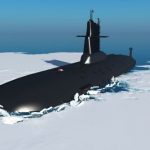 History
History  History
History  Technology
Technology 10 Modern Technologies That Accidentally Imitate Ancient Magic
 Mysteries
Mysteries 10 Mysteries of the Human Genome
 Weird Stuff
Weird Stuff 10 Things So Rare They’ve Only Been Found Once
 History
History 10 Legends Whose Last Moments Undid Their Glory
 Health
Health 10 Futuristic Ideas to Treat Common Medical Problems
 Weird Stuff
Weird Stuff Ten Surreal Attempts to Reverse Baldness
 Facts
Facts 10 U.S. Government Contingency Plans for the Unthinkable
 History
History 10 Weird Distractions from the Great Depression
 Movies and TV
Movies and TV 10 Fictional Kings Who Go from Good to Bad
 History
History 10 Bizarre Friendly Fire Incidents in Military History
 Technology
Technology 10 Modern Technologies That Accidentally Imitate Ancient Magic
 Mysteries
Mysteries 10 Mysteries of the Human Genome
Who's Behind Listverse?

Jamie Frater
Head Editor
Jamie founded Listverse due to an insatiable desire to share fascinating, obscure, and bizarre facts. He has been a guest speaker on numerous national radio and television stations and is a five time published author.
More About Us Weird Stuff
Weird Stuff 10 Things So Rare They’ve Only Been Found Once
 History
History 10 Legends Whose Last Moments Undid Their Glory
 Health
Health 10 Futuristic Ideas to Treat Common Medical Problems
 Weird Stuff
Weird Stuff Ten Surreal Attempts to Reverse Baldness
 Facts
Facts 10 U.S. Government Contingency Plans for the Unthinkable
 History
History 10 Weird Distractions from the Great Depression
 Movies and TV
Movies and TV 10 Fictional Kings Who Go from Good to Bad
10 Bizarre Friendly Fire Incidents in Military History
Warfare is supposed to be simple: you shoot at the other side. But the battlefield has never been tidy or predictable. Smoke, fog, darkness, stress, fear, bad intel, and human error can turn even the most disciplined forces into accidental threats to their own comrades.
In earlier centuries, armies lacked radios, radar, standardized uniforms, and clear signaling systems. Confusion wasn’t the exception—it was the rule. Today’s militaries use advanced Identification Friend or Foe (IFF) systems, encrypted communication, and satellite tracking to prevent mistakes… and yet friendly fire still happens. Sometimes, tragically. Sometimes, absurdly.
Throughout history, armies have fired on their own aircraft, bombed their own troops, sunk their own ships, and, in one infamous case, destroyed 10,000 of their own soldiers without the enemy even showing up.
Here are ten of the strangest, deadliest, and most bewildering friendly fire incidents ever recorded.
Related: Ten Times the Military Fought Sea Creatures
10 Battle of Germantown – American Revolutionary War
Fought on October 4, 1777, the Battle of Germantown came at a low point for the Continental Army. After losing Philadelphia to the British, George Washington attempted a bold surprise attack with four converging columns of American troops. If executed properly, it might have changed the course of the campaign.
But thick fog rolled across Pennsylvania that morning, reducing visibility to mere feet. As two American units—Brigadier General Anthony Wayne’s and General Adam Stephen’s—moved into position, they spotted silhouettes ahead and opened fire. Unfortunately, they were shooting at each other.
The resulting panic halted the entire American advance. Confusion spread through the line, ammunition ran low, and coordination fell apart. What had begun as a carefully planned maneuver dissolved into chaos.
By the battle’s end, Washington’s forces retreated to Whitemarsh with roughly 1,000 casualties. The British held their lines—thanks, in part, to an American fog thicker than their musket smoke.[1]
9 Operation Wikinger – Second World War
Operation Wikinger was a 1940 German naval mission intended to destroy British fishing vessels believed to be aiding the Royal Navy at Dogger Bank. Six Kriegsmarine destroyers set out, supposedly supported by the Luftwaffe. In reality, no one had told the Luftwaffe their ships would be there.
Shortly after reaching open water, German bombers spotted the destroyers and assumed they were British. Diving in, they dropped bombs on their own fleet. The destroyer Leberecht Maass was hit and sank almost immediately. The nearby destroyer Max Schultz then disappeared—likely due to a mine, though some historians still suspect additional friendly bombs.
By the time the attack ended, 578 German sailors were dead, and only around 60 survived.
Berlin initially blamed British mines. Only after investigations did they acknowledge the awful truth: the Luftwaffe had annihilated their own ships.[2]
8 Operation COBRA – Second World War
Operation COBRA was a major Allied bombing campaign during the Normandy invasion, spearheaded by General Omar Bradley. Its goal was simple: break the German defensive lines near Saint-Lô and allow U.S. troops to push into France.
But on July 25, 1944, the plan unraveled. Heavy bombers approached their targets from the wrong direction, causing bomb patterns to “creep” backward. Smoke panels meant to mark American positions were misread, and 500-pound bombs began falling on U.S. troops.
The carnage was catastrophic. More than 100 American soldiers were killed, including Lieutenant General Lesley J. McNair, one of the highest-ranking U.S. officers killed during the war. Nearly 500 others were wounded.
Despite the tragedy, Operation COBRA ultimately succeeded in breaking German lines, opening the path to liberating France. But its friendly fire toll remains one of the deadliest in U.S. military history.[3]
7 Pat Tillman – Afghanistan War
Pat Tillman left a successful NFL career after 9/11 to enlist in the U.S. Army. In 2004, while deployed in Afghanistan, he was killed during a chaotic firefight in a canyon near Khost.
Initial reports claimed Tillman died heroically under enemy attack while assisting fellow Rangers. But as inconsistencies surfaced, investigations revealed the truth: he had been killed by friendly fire. Tillman was struck by three rounds from an M16 fired by soldiers from his own platoon.
The confusion was immense—dust, disorganized movement, and misidentified positions contributed to the fatal mistake. Official inquiries concluded the incident was accidental.
However, the secrecy surrounding his death, the burning of some of his personal effects, and conflicting testimonies sparked widespread speculation. Some soldiers suggested negligence; online theories went further, alleging intentional killing due to Tillman’s reported disillusionment with the war. No investigation found evidence of deliberate murder, but the controversy persists.
Tillman was posthumously awarded the Silver Star and Purple Heart, and his death remains one of the most debated friendly fire cases in modern U.S. military history.[4]
6 Battle of Barking Creek – Second World War
On September 6, 1939—just three days into WWII—British radar operators detected unknown aircraft approaching the Essex coast. Believing a Luftwaffe raid was imminent, the RAF scrambled 116 fighters from several bases.
The radar contacts, however, weren’t German. They were RAF Hurricanes returning from patrol. Early Chain Home radar was notoriously difficult to interpret, and controllers misread friendly signals as enemy ones. Beneath the confusion, a flight of RAF Spitfires engaged the Hurricanes.
Pilot Montague Hulton-Harrop was shot down and killed, becoming the first British fighter pilot to die in WWII. His death shocked the Air Ministry and exposed major flaws in British identification procedures.
The incident directly accelerated the development of standardized IFF systems, ensuring pilots could recognize friend from foe before pulling the trigger.[5]
5 Black Hawk Shootdown Incident – Persian Gulf War
On April 14, 1994, two U.S. Army Black Hawk helicopters were escorting UN personnel over northern Iraq when they were mistaken for hostile aircraft by U.S. Air Force F-15Cs. The fighters’ IFF systems failed to identify the helicopters as friendly, and AWACS controllers also misinterpreted radar data.
Believing the Black Hawks to be Iraqi Hind gunships, the F-15Cs fired two missiles, destroying both helicopters. All 26 people aboard were killed, including allied officers and humanitarian workers.
The tragedy triggered a massive investigation, which found breakdowns at every level: faulty identification systems, communication failures, confusion aboard the AWACS aircraft, and inadequate coordination between Army and Air Force units.
The fallout was significant. Several officers were disciplined, and the 53rd Fighter Squadron was inactivated five years later, in part due to the reputational damage from the shootdown.[6]
4 Battle of Karansebes – Austro-Turkish War
The Battle of Karansebes (1788) is one of history’s most infamous—and bizarre—friendly fire legends. During the Austro-Turkish War, Emperor Joseph II commanded a massive, multiethnic force with dozens of languages spoken within its ranks. Communication was a constant challenge.
One night, a group of Austrian cavalrymen, drinking schnapps, encountered infantry troops who demanded alcohol. A scuffle broke out. Someone fired a shot. Others panicked and yelled, “The Turks are attacking!”—in languages many soldiers didn’t understand. Chaos spread through the camp.
Units opened fire on each other. Artillery batteries joined in. Commanders shouted contradictory orders. In the darkness, the Austrian army essentially conducted a full-scale battle against itself.
The story claims that around 10,000 soldiers died before anyone realized no enemy had ever appeared.
While widely repeated, historians caution that details are exaggerated and possibly apocryphal. But whether myth or fact, the tale endures as the ultimate example of catastrophic military confusion.[7]
3 Exercise Tiger – Second World War
Exercise Tiger was a full-scale rehearsal for the D-Day landings at Slapton Sands in Devon, England. The terrain resembled the beaches of Normandy, but its proximity to German E-boat bases made it dangerous.
American commanders insisted on realism and used live ammunition during training. Several troops were killed before the exercise even began. But the real disaster struck on April 28, 1944, when nine German E-boats intercepted a convoy of landing ships participating in the rehearsal.
The E-boats torpedoed multiple vessels, sinking two LSTs and killing roughly 749 American troops. Survivors reported fires, explosions, and men jumping into frigid water, weighed down by gear.
The U.S. concealed many details for decades, fearing the impact on morale before the actual invasion. Today, Exercise Tiger is remembered as one of the deadliest pre-invasion tragedies of World War II—and a stark reminder that even practice can be fatal.[8]
2 Tarnak Farm Incident – Afghanistan War
On April 17, 2002, Canadian soldiers were conducting a nighttime live-fire exercise near Kandahar when an American F-16 pilot mistook their gunfire for an enemy attack. He dropped a 500-pound GBU-12 laser-guided bomb directly onto the training area.
Four Canadians were killed and eight wounded—the country’s first combat deaths since the Korean War.
Multiple investigations concluded that the pilot violated rules of engagement by acting without proper clearance. AWACS crews had warned him that friendlies were in the area, but the pilot interpreted tracer fire as hostile. Dazzling nighttime conditions and communication gaps contributed to the misidentification.
The tragedy strained U.S.–Canadian relations briefly, but also led to major improvements in coalition communication protocols in Afghanistan.[9]
1 USS Liberty Incident – Six-Day War
On June 8, 1967, during the Six-Day War, the American intelligence ship USS Liberty was patrolling international waters off the Sinai Peninsula when Israeli fighter jets and torpedo boats suddenly attacked it. The assault lasted more than an hour.
Israeli aircraft strafed the ship with cannon fire and rockets, followed by napalm. Torpedo boats then launched five torpedoes—one of which struck the hull, killing 25 men instantly. In total, 34 American crew members died and 171 were wounded.
Israel claimed the attack was a tragic case of mistaken identity, believing the Liberty to be an Egyptian vessel. The U.S. accepted the explanation publicly, though many American sailors insisted the ship’s markings were unmistakable.
The incident remains one of the most controversial friendly fire cases in military history, spawning decades of debate and multiple competing investigations. To this day, some argue the attack was deliberate, while others maintain it was a perfect storm of wartime confusion.[10]








